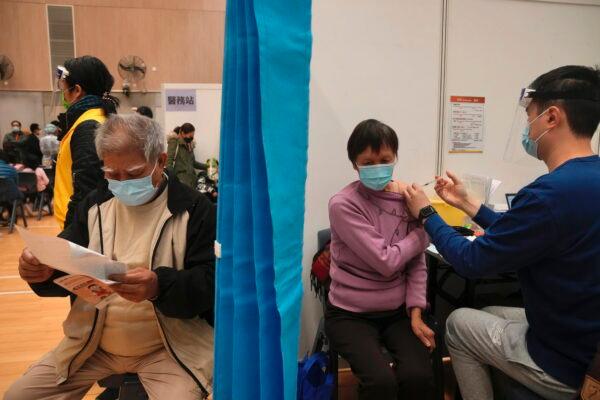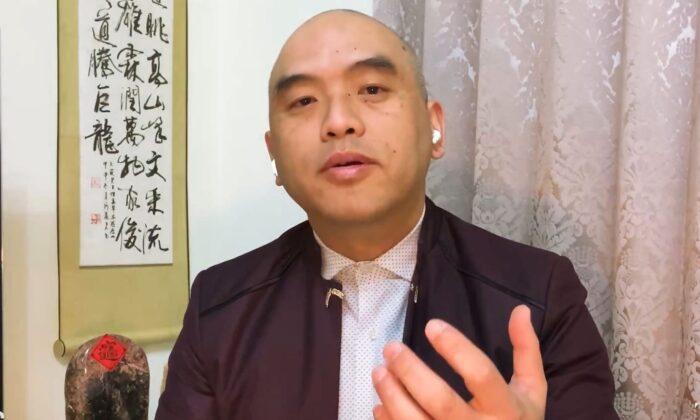The official number of COVID-19 deaths in China is far from real, judging by the growth in the funeral industry, according to a former U.S. Army microbiologist. The communist regime keeps covering up the actual number to tout its zero-COVID lockdown policy as successful.
“It was like a bomb cyclone of the virus,” said Dr. Sean Lin, a former U.S. Army microbiologist, currently an assistant professor in the Biomedical Science Department at Feitian College in Middletown, New York, and a member of the Committee on the Present Danger: China.
Cover-up

The Chinese Communist Party (CCP) has been covering up the actual number of infections from the beginning of the pandemic outbreak, Lin said. “So we don’t know actually, even at the early Wuhan outbreak, how many people died due to that early wave of infection.”
For the last three years, the CCP has continued emphasizing that due to its very strict zero-COVID policy, the regime has “successfully contained the infection” and “helped save many people’s lives,” Lin said.
However, on social media, a lot of people talk about how many people got infected or tested positive for COVID in their cities, and that due to COVID, many went to the hospital, many had severe symptoms, and many died, Lin said.
There are also reports about long lines for funeral services and people delivering the corpses of their loved ones to the crematories using their own cars, Lin continued. “I see so many different videos from so many different cities, and the number definitely cannot match the government’s version.”
“I believe that a tremendous number of people died in China even in just the last two months, but the government keeps lying about it. And it’s a very, very tragic situation that so many people die and the government doesn’t even count their deaths as COVID deaths,” Lin said.
The Chinese regime keeps restricting the definition of COVID deaths, he said. Nowadays, crematories even tell people who deliver their relatives’ bodies that they cannot put COVID-19 as the cause of death or the corpses will be denied cremation, Lin explained. “So people are forced to lie, otherwise their family’s body cannot be cremated. So it’s a very, very deep cover-up.”
Lin said he analyzed the numbers released by the Chinese civil administration that showed the growth in the crematory and funeral services, the increase in the number of incinerators, and the growing employment in the funeral service industry.
China Model
Many public health officials worldwide, including high-ranking officials, followed China’s model in response to the COVID-19 pandemic by implementing measures such as lockdowns, severe quarantines, and social distancing in their countries, Lin said.They based their decisions on the official data from the Chinese regime, the only source of information about COVID in China they could get.
Many people believe that although the zero-COVID policy was too harsh and caused some collateral damage, that at least it successfully contained the pandemic, Lin said.“That’s actually a very, very false illusion that many people have, because the CCP kept lying about it for the last three years.”
Lin pointed out that the zero-COVID approach made the whole Chinese population more vulnerable to the disease because it deprived people of a healthy lifestyle. He said that people needed to be exposed to the natural environment, to breathe fresh air, and eat a normal diet.
Moreover, people under lockdown experienced severe mental stress and anxiety. To release it, many confined to their high-rise residences were yelling out in the evenings from their windows and balconies.
Consequences of Zero-COVID Policy
Lin said the entire Chinese population is actually suffering from post-traumatic stress disorder (PTSD) due to prolonged lockdowns, and many people’s immune systems were critically weakened during those months. This resulted in many becoming severely infected when the huge viral infection exploded in China.The situation was further aggravated by the severe shortage of basic medicines, including drugs to reduce fever, Lin said. Drug production in China is fully controlled by the communist regime, which failed to produce sufficient quantities of these drugs during the zero-COVID period, he explained.
Many pharmaceutical companies and pharmacies in China that produced and sold cold and flu medication went bankrupt because of the zero-COVID restrictions. The remaining factories weren’t given enough notice to adequately prepare for a sudden increase in demand after the restrictions were lifted.

Impact on Older Population

Now the CCP is saying that the vaccine campaign did not sufficiently target seniors, and that is why more seniors are getting severe COVID-19 symptoms, Lin said.
Although the efficacy of Chinese vaccines is relatively low, they are being promoted in China and abroad because the CCP props up their promotion through the World Health Organization, Lin said.
The one-child policy introduced in China in 1979 lasted nearly four decades and made the Chinese society unsustainable from a population perspective, Lin said.
Lin believes that “the Chinese government [is] actually taking advantage of the pandemic outbreak as a new strategy to readjust society’s structure.”
The Chinese regime’s common policy nowadays seems to be to let whoever can get infected, get infected, and even create conditions to try to get more people infected, Lin said.
Many older people have comorbidity issues, so many of them will die from COVID-19. Judging from the limited social media posts we’re seeing from China with videos of funerals and families mourning in cities and the countryside, we know that many seniors have died in China.
Why the Effectiveness of COVID-19 Measures Varies
“One of the biggest lessons that we should learn in the last three years of the pandemic is that what we understand about the virus is very limited,” Lin said. The start of the outbreak, the variants that will emerge, and how they will dominate different regions cannot be forecast.It is not known how many viruses actually targeted each area during the peak of the infection, and there is no model that can predict this, the microbiologist explained.
He likened the virus spread to a sandstorm where particles of sand land on a particular area, except that viruses are microscopic, much smaller than sand particles and not visible to the human eye.
The viral load was so severe when it landed in China that it covered pretty much everything in the entire country, yet people could not see it, Lin said.
It was so easy for people in China to get infected. People who mostly stayed at home tested positive for COVID after barely going out.
The severity of the pandemic in different regions and countries varied greatly and depended on the amount of virus that landed on a particular region, Lin said. Therefore, the effectiveness of measures applied in response to the pandemic also varied, he explained.
Some countries such as Africa—where very loose measures were applied—were not very affected by the pandemic, while others, including some Western countries with very strict lockdown and social distancing policies, still experienced waves of pandemic infection, Lin said.
“Many parts of the epidemiology, I think, need to be revised. We need to open our minds to see that we have very limited understanding and [try] to understand the virus epidemiology on the grand scale,” he said.






